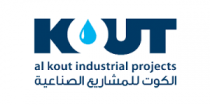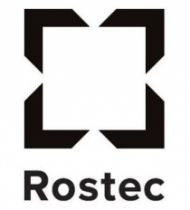Global 3D Printing Metal Market Size, Share & Trends Analysis Report 2020 by Form (Powder, Filament), Product (Titanium, Nickel, Steel, Aluminum) - ResearchAndMarkets.com
The "3D Printing Metal Market Size, Share & Trends Analysis Report By Form (Powder, Filament), By Product (Titanium, Nickel, Steel, Aluminum), By Application, By Region, And Segment Forecasts, 2020 - 2027" report has been added to ResearchAndMarkets.com's offering.
The global 3D printing metal market size is projected to reach USD 5.51 billion by 2027, expanding at a CAGR of 27.8% from 2020 to 2027.
Accelerating growth in the adoption of 3D printing for manufacturing of metal parts, especially for the aviation and healthcare industries, is the crucial factor driving the market.
Metal is a primary focus area in additive manufacturing (AM). Investments in metal AM have increased at a rapid pace in recent years. AM process offers exceptionally high-performance parts made from aluminum, steel, nickel, titanium, and others for demanding, high-value industries, such as medical and aerospace. These industries have observed faster penetration of AM on account of its ability to manufacture complex parts, decreased part weight, and material needs.
The 3D printing metal industry is witnessing growing demand from the aerospace and defense sectors owing to the rising capabilities to reduce aerospace part weight and focus toward improving overall efficiency, which otherwise proves costly and time consuming through traditional manufacturing process. The ability to print cheaper equipment in less time on demand is expected to be the key factor driving the industry.
North America accounted for the largest share in the utilization of additive manufacturing metals for the aerospace and defense industry. Recently mandated policies of U.S. to increase the defense investment by significant levels are expected to bolster the regional market growth. Involvement of private players in space exploration projects is further expected to augment the market growth across the region.
The potential cost savings are stimulating the growth of the market in aerospace and defense. For instance, in November 2018, Lockheed Martin, U.S.-based global aerospace and defense company, announced that due to 3D printed parts, there was reduction in the price of its F-35 Full Mission Simulator (FMS) unit and has led to the savings of nearly USD 45.0 million.
3D Printing Metal Market Report Highlights
- Aerospace and defense is expected to emerge as the fastest growing application segment from 2020 to 2027 owing to increasing demand for highly customizable parts and reduced lead time offered by additive manufacturing
- Titanium dominated the market with 65.3% share of the global revenue in 2019 due to its large scale adoption in the aerospace and healthcare industries
- Asia Pacific is predicted to expand at the fastest CAGR of 31.6%, in terms of volume, from 2020 to 2027 as the region is largely untapped and is therefore predicted to witness substantial investments in metal 3D printing over the coming years
- In 2018, Norsk Titanium used a new technology called rapid plasma deposition (RPD), which is considered a superior technology to produce mechanically enhanced structural metal components.
Key Topics Covered:
Chapter 1 Methodology and Scope
Chapter 2 Executive Summary
2.1 Market snapshot
Chapter 3 3D Printing Metal Market Variables, Trends & Scope
3.1 Market segmentation & scope
3.2 3D Printing Metal Market value chain analysis
3.3 Raw material trend
3.3.1 Aluminum
3.3.2 Silver
3.3.3 Gold
3.3.4 Steel
3.3.5 Titanium
3.3.5.1 3D printing with titanium: Advantages and disadvantages
3.3.5.2 Titanium 3D printers and technologies
3.4 Market dynamics
3.4.1 Market driver analysis
3.4.1.1 Increasing demand for 3D printing
3.4.1.1 Increasing demand from aerospace and defense sector
3.4.2 Market restraint analysis
3.4.2.1 High material cost
3.5 Regulatory framework
3.6 Penetration & growth prospect mapping
3.7 3D Printing Metal Market - PESTEL analysis
3.8 Industry analysis - Porter's
Chapter 4 3D Printing Metal Market: Form Estimates & Trend Analysis
4.1 3D Printing Metal Market: Form movement analysis
4.2 Powder
4.2.1 Powder 3D Printing Metal Market demand, 2016 - 2027 (Tons) (USD Million)
4.2.2 Powder 3D Printing Metal Market demand, by region, 2016 - 2027 (Tons) (USD Million)
4.3 Filament
Chapter 5 3D Printing Metal Market: Application Estimates & Trend Analysis
5.1 3D Printing Metal Market: Application movement analysis
5.2 Aerospace & defense
5.2.1 3D Printing Metal Market demand in Aerospace & defense, 2016 - 2027 (Tons) (USD Million)
5.2.2 3D Printing Metal Market demand in Aerospace & defense, by region, 2016 - 2027 (Tons) (USD Million)
5.3 Automotive
5.4 Medical & Dental
5.5 Other applications
Chapter 6 3D Printing Metal Market: Product Estimates & Trend Analysis
6.1 Titanium
6.1.1 Titanium 3D Printing Metal Market demand, 2016 - 2027 (Tons) (USD Million)
6.1.2 Titanium 3D Printing Metal Market demand, by region, 2016 - 2027 (Tons) (USD Million)
6.2 Nickel
6.3 Steel
6.4 Aluminum
6.5 Other Metals
Chapter 7 3D Printing Metal Market: Regional Estimates & Trend Analysis, by Application
7.1 Regional Movement Analysis & Market Share, 2019 & 2027
Chapter 8 Competitive Landscape
8.1 Competitive Scenario
8.2 Market Positioning
8.3 Vendor Landscape
8.4 Strategy Framework
Chapter 9 Company Profiles
- Arcam AB
- ExOne GmbH
- 3D Systems Corporation
- Materialise NV
- Renishaw PLC
- Hoganas AB
- Voxeljet AG
- Carpenter Technology Corporation
- Equispheres
- GKN PLC
- Sandvik AB
- LPW Technology Inc.
- Optomec Inc.
- EOS GmbH Electro Optical Systems
- Concept Laser GmbH
For more information about this report visit https://www.researchandmarkets.com/r/2tk6q8
View source version on businesswire.com: https://www.businesswire.com/news/home/20200922005504/en/




